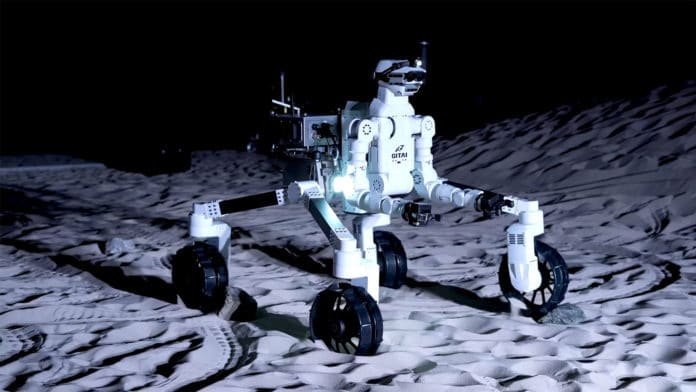The competition for lunar resource exploration and lunar base development is accelerating. With this, the demand for robotic labor, which is cheaper and safer than conventional human astronauts, is rapidly increasing.
In response to this growing demand, the Japanese company GITAI has developed the advanced lunar robotic rover “R1” that can perform general-purpose tasks on the moon such as exploration, mining, inspection, maintenance, assembly, etc.
In December 2021, the GITAI lunar robotic rover R1 conducted numerous tasks and mobility operations at the mock lunar surface environment in JAXA’s Sagamihara Campus and completed them all in success. During this ground demonstration, the lunar rover was able to build a solar panel, climb over rocks, and take soil samples with its robotic arms.
The GITAI lunar robotic rover R1 is capable of driving on the mock lunar surface and has the mobility to drive over rocks a few dozen centimeters in size. Thanks to the four wheels with individual omni-directional steering, the robot can move and clear obstacles in any direction.
During the tests, GITAI and JAXA team conducted a series of activities that are necessary to assemble complex structures (solar panels, communication antennas, etc.) on the moon, which will be critical infrastructure for lunar bases that NASA envisions. Then they conducted a group of tasks to collect regolith from the lunar surface. The tasks include the GITAI lunar robotic rover R1 removing necessary tools from a container, moving to the point of interest, collecting lunar samples and storing it, returning all equipment into the container, and locking it up, and all tasks were completed in success.
In addition, the GITAI lunar robotic rover R1 has proven that it has the driving performance to climb a sandy slope of 15-20 degrees on the mock lunar surface.
GITAI will continue to improve the versatility of its general-purpose robots and compatibility with the lunar surface environment in order to conduct a technology demonstration on the moon in the mid-2020s.
